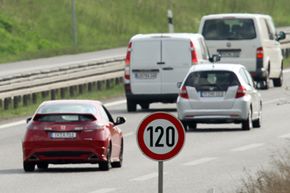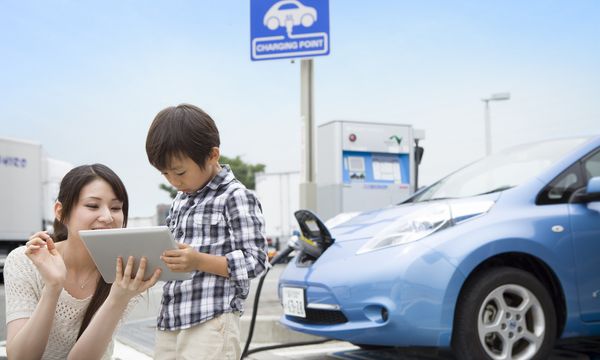Hypermiling is a lifestyle to some, a mere hobby to others and something of a mystery to the rest. It's a way of driving a car while using as little gas as possible. Every last fume of fuel in the tank is precious to a hypermiler. Some hypermilers are drawn to the practice due to environmental concerns; but most simply share a passion for fiscal thriftiness. Regardless of the motivation, they all work together to develop common techniques and procedures. And it can get competitive, too, which can lead some hypermilers to indulge in risky or even downright dangerous strategies. So if you're looking to give it a try, we recommend you stick to some of the safer hypermiling techniques. The following is by no means a comprehensive list, but rather an overview of some of the more common hypermiling strategies.
First, keep the car well maintained, clean and as empty as possible. Extra stuff (like recreational gear or accumulated debris) adds weight and reduces mileage, and add-on accessories like roof racks will decrease the car's aerodynamics. If you're a casual hypermiler, there's no need to make permanent alterations to your car -- just remember that every little bit helps. And keeping the car in top notch condition (inside and out) means it'll run at peak efficiency.
Advertisement
If your car is so equipped, monitoring real-time fuel readouts is generally a safe practice -- no more hazardous than occasionally checking other system monitors. But drivers who become obsessed with fuel economy need to remember that they have to watch the road, too. A lot of hypermilers suggest that the best first step is to install a gauge that shows your real-time fuel usage (assuming your car doesn't already have one). They're relatively inexpensive, and are considered by some to be the single most useful tool a hypermiler can have. Make sure the gauge is installed somewhere convenient so you can glance at it regularly without diverting your attention from the road for too long. Over time, a fuel monitor can help you learn better overall driving habits.
Serious hypermilers carefully plan their driving path, and there are lots of factors to consider here. Online maps are often used to plan trips with the fewest stops along the route -- stopping wastes a lot of gas. Maintaining a steady speed saves the most fuel. Wind can even be a factor. According to Edmunds, some hypermilers simply choose to stay home if the wind conditions are not in their favor. As a matter of fact, all weather conditions have their own unique effect on your car's mileage, but running against the wind is particularly detrimental. (Catching a tailwind does help, though.) Also, it's wise to take steps to reduce idling and aimless driving. In other words, don't spend a lot of time driving around parking lots looking for the closest spot. Instead, park at the perimeter or in a lonely corner, and remember to park facing out so you can just get in your car and go -- driving in reverse is considered a waste of fuel to a hypermiler. You may have to walk a little farther, but you'll avoid having to navigate around other cars and crowds of people. And besides that, walking doesn't require any gas at all.
To reduce the load on your car's engine, keep the electrical accessory use to a minimum. Don't run the air conditioner (or any other accessories). Driving with the AC on can account for up to 10 percent of your overall fuel consumption [source: Hypermiler]. On a related note, it's a good idea to keep the windows closed, too, because air flowing in and out of the car will create additional drag. So how do you stay comfortable on a hot day with the windows closed and the climate control switched off? Serious hypermilers use bags of ice. In the summer, try to park in the shade to keep the interior of your car as cool as possible, and use a windshield shade to block the cabin from the sun's rays. The key is to reduce AC use as much as possible.
Another hypermiler trick is to block the radiator to create a warmer engine bay. A warm engine runs on less fuel. A lot of hypermilers use block-off plates to block their grilles and radiators, to reduce warm up times and to keep the engine bay toasty. There are plastic kits available for many popular car models, and the inserts can even be painted to match the car's exterior paint. A cheaper alternative is to simply use a piece of cardboard. On a similar note, remember to take the steps necessary to reduce the amount of time your car needs to warm up in the winter. Park in the garage if you have one -- or park in a sunny spot if you don't. Also, clean as much snow and ice from the body of your car before driving off. Snow adds weight and increases drag.
One last tip: A steady foot on the accelerator pedal can save fuel on a long trip, so give your car's cruise control a try. Not only will it save gas without sacrificing control of the car, it'll also increase the likelihood that you'll live to hypermile another day.
Advertisement

